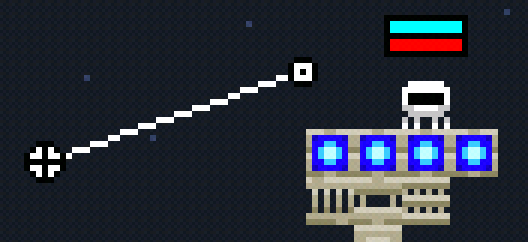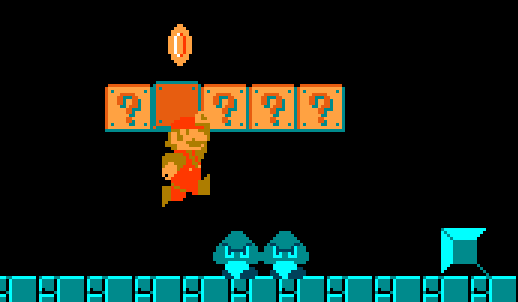The Coefficient of Clean pt.6
 Monday, February 14, 2011 at 10:38PM
Monday, February 14, 2011 at 10:38PM To conclude I'll explain why I named this article series The Coefficient of Clean. But first, I'll recap. Interactivity is very important in the video games medium. All interactivity starts on the mechanical level. This includes how player states are designed, what moves cancel into other moves, and whether or not you can perform two or more actions at once. Put mechanics and level design together and the gameplay emerges. Because there can be countless emergent possibilities in a game, it's important for players to receive feedback from the game system to make informed decisions. Whether through sight, sound, or touch the communication channels must remain open and clear. After consider the cleanness of the emergent gameplay, one can consider if the actual challenges and optional content are focused and meaningful. All of these layers determine how clean a game is.
The coefficient of clean is a phrase that describes the uneven, hierarchical relationship between the elements of design that make up the clean/cluttering emergent result. Basically, it's what I just explained above. To convey exactly how these layers factor together I created the following equation. (The coefficients are F and C).
C*(F*M) - S = clean#
- M = mechanics design
- (featuring individuality, directness, dynamic, intuitiveness. Or not featuring simultaneity, cancels).
- 1 - [total amount of lacking qualities for all mechanics / (#-of-mechanics * 6)].
- F = feedback design
- (form-fits-function, hitbox design, hits pause, hit sparks, animation, HUD, sound, force feedback)
- #0-1 : 1 = maximum appropriate feedback 0 = absolutely no feedback. -.05 for every gameplay interaction without sufficient feedback. Keep in mind that sound and force feedback have a lower bandwidth for carrying feedback information.
- C = camera design
- #0-1 : 1 = the previously defined feedback elements are clearly displayed 0 = camera never presents relevant feedback. -.1 for every type of camera issue that hinders making informed decisions.
- S = subjective assessment
- (odd emergent behavior, arbitrary limitations, static-space challenges, excessive complexities)
- -.02 per case.
The take away from the math is how important feedback and camera design is to game's cleanness. As a designer, even if you're stuck with some odd, quirky, and somewhat cluttered core mechanics, the main thing to focus on from here is designing the rest of the game to bring out the most of what you have. Also, if you have to alter your design for the sake of cleanness, you should add more arbitrary limitations, which only subtract from the final score, to increase any other variable (especially C and F).

I've written about this game before. But I submit it again as an example of a 100% clean game.
1*(1*1) - 0 = 1
- M = 1. BOOST is the only mechanic so of course it's individual. Aiming follows the mouse movement to a fine degree (direct). As a movement mechanic, it only affects the momentum of your ship (dynamic). It's fairly intuitive in that it launches the ship in the direction that you drag the mouse. There are not additional mechanics for simultaneous actions or for cancels.
- F = 1. Minimal HUD. Small blue hit spark after BOOSTing. Very exact hitboxes aided by the quantified block visual design. The ship blinks when damaged. Fuel and lifebars.
- C = 1. All the levels are single screen. This eliminates all camera scrolling problems. All the interactive gameplay elements are clearly marked with no visual overlap of any kind.
- S = 0. No invincible frames. No excessive options. An optional hard mode to strive for. 5 different types of level elements that work well to flesh out the design space centered around the primary function of movement. No glitches. No secret techniques. Since each level is just a screen large, there can only be so many challenges packed in. So even if you die near the end, when you restart you're not set too far back. This design reduces the amount of repetition and possible static-space.
Contrast Station 38 with Super Mario Bros., the game I've investigated in the majority of my game design articles here at Critical-Gaming.

.9*(.95*.92) - .04 = .7466
- M = .92. 5 mechanics total; JUMP. DUCK. MOVE. RUN. SHOOT. JUMP is mapped to its own button (individual), but RUN and SHOOT share a button. It's tricky to do these actions separately when Fire Mario. There are no cancels. JUMPing is very dynamic. You can kill enemies, overcome obstacles, and break bricks. You can run-and-gun in SMB, but the aiming is limited for balance.
- F = .95 Though an NES game, SMB features a lot of excellent feedback. Even Bowser's mouth opens as a preparatory animation before he spits out fire. If you look closely, the Hammer Bros. do the same prepping their hammers. The HUD is minimal, the hit sparks are clear, and the hit pause is obvious. To nitpick, which I must, there's no clear feedback that Bowser takes damage from fire balls.
- C = .9 Super Mario's camera is very functional but it's not perfect. Because interactions and the matching visual feedback can occur off screen, clutter and nuance is created. Few enemies can overlap other enemies (bullet bills) so 2D layered surprises are rare. Finally, the camera doesn't follow Mario when he JUMPs off the top of the screen. This isn't so much of a problem in SMB as it is in The Lost Levels.
- S = .04 Not being able to travel backwards in a level is an arbitrary limitation that was modified in all future Mario platformers. In this game the limitation functions as an invisible wall that only enemies and powerups can pass through. And squeezing out of 1 brick tall spaces as Super/Fire Mario is a bit odd.
It's obvious that it's far easier to make a clean game that has very few gameplay elements and mechanics. Also notice that it's much more difficult for 3D games to be as clean as 2D games because of the nature 3D. Objects further away from the point of view are much more likely to be obscured by closer objects. And with an extra dimension of space, more elements can be positioned together with no overlap. And let's not forget about ba3D.
Keep in mind a game's clean# doesn't indicate how complex a game is. It merely measures how clean the elements are in the emergent whole. The cleanness of a game also doesn't describe how fun, deep, complex, skillful, narratively coherent, or how mature the content is in a game. Cleanness doesn't refer to the aesthetic "business" of the game art. Cleanness starts objectively by considering gameplay mechanics, and the functional focus organizes the entire investigation. So only if the art direction clashes with the visual feedback design would the artistic vision affect cleanness.
Clutter is something developers can work very hard to prevent. At every turn the smallest design decisions can make a game more cluttered. As you can see from the formula, the cleanness that you start out with (mechanical level) can only be maintained or diminished. Also, the more subjective assessments are subtracted as the final step because this seems to be the best way to approach the evaluation. In other words, after you've measured and thought everything through objectively, the final factor to consider is largely determined by how you feel.
And I feel like that about cleans up this topic. Expect a few addendums in the future.


Reader Comments (4)
I've got the feeling that you overestimate the controls cleanness of Station 38. You are contrained by the amount of fuel you can use before landing back, and several moves require the player to carefully decide how much fuel he will invest in the initial boost, and quickly adapt with additional in-flight boosts.
There's an arbitrary limit (one cannot use all the fuel at once: the maximum you can use is half your fuel, afaik), and there is no visual feedback, even while on the ground, of how much the move you're about to launch will consume, nor how far it will take you.
@ sylvainulg
Good comment. Very specific. Let's see what I can do here.
Remember, everything in a game is an arbitrary rule/limitation. We have to accept a lot of rules of a game as its premise before we can start pointing out arbitrary interactions. Arbitrary limits are more like special cases, ie., interactions that break the rules or go against form-fits-function.This is why the "S" variable is called the subjective variable.
Being limited to a certain amount of fuel overall is explained by the fiction and displayed by the blue bar.
Not being able to use the fuel all at once is just part of the game. And this rule is indicated by the white line you draw with the mouse. The line at max distance is exactly half of the fuel bar. When you have less than half fuel, the line distance matches. Perhaps the boosters can only take so much power at one time.
If we just point out any kind of gameplay limitations we could say that Mario should be able to jump higher than 5 bricks when he RUN+JUMPs. Or that Mario should be able to JUMP shorter than 2 bricks like Mega Man can. These aren't issues because Mario's mechanics are consistent and tuned for his gameplay. In the same way we accept that Mario can only JUMP so high in one JUMP, the ship can only BOOST so far/fast in a single BOOST using half of its fuel.
Most games don't give you feedback on how your moves will exactly play out before you do them. As long as moves are consistent, we're supposed to learn how fast the ship moves at max speed and how slow it moves with a little BOOST to calibrate our strategies.
If in Station 38 some levels simply didn't allow you to use half of your fuel at once for no reason, that would be an arbitrary limitation. Or if you couldn't use your BOOST if you dropped below and invisible line on some stages but not on others.
Wow, I love the Mario idea. Is there a way I can get your information to see if I can order it for my son's 6Th birthday party.
if u have other mario, Luigi o Yoshi also interested..
@ Mario kart Party Supplies
What kind of spam is this? There's no link to another completely unrelated site. And the message doesn't make sense in the oddest way.
I won't delete it for now. Maybe someone else can figure it out.